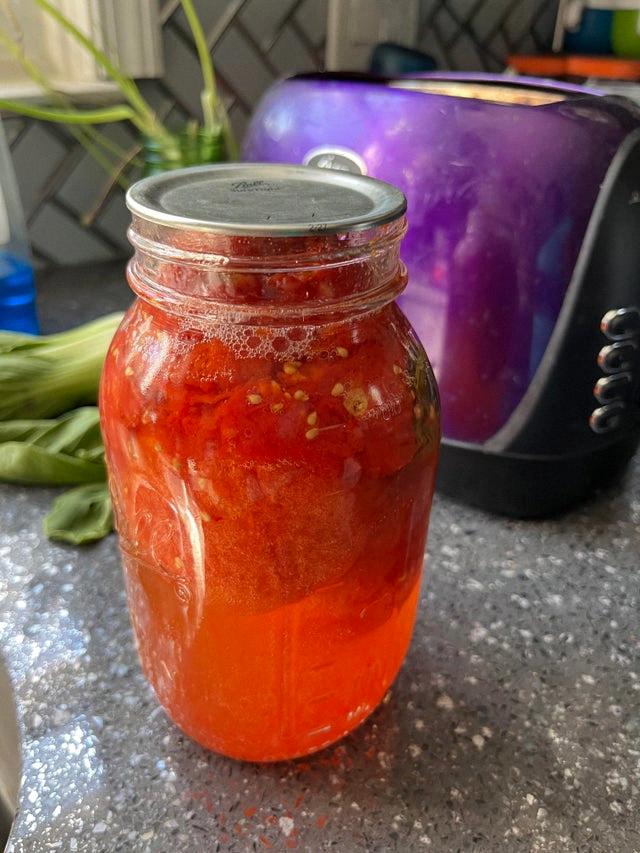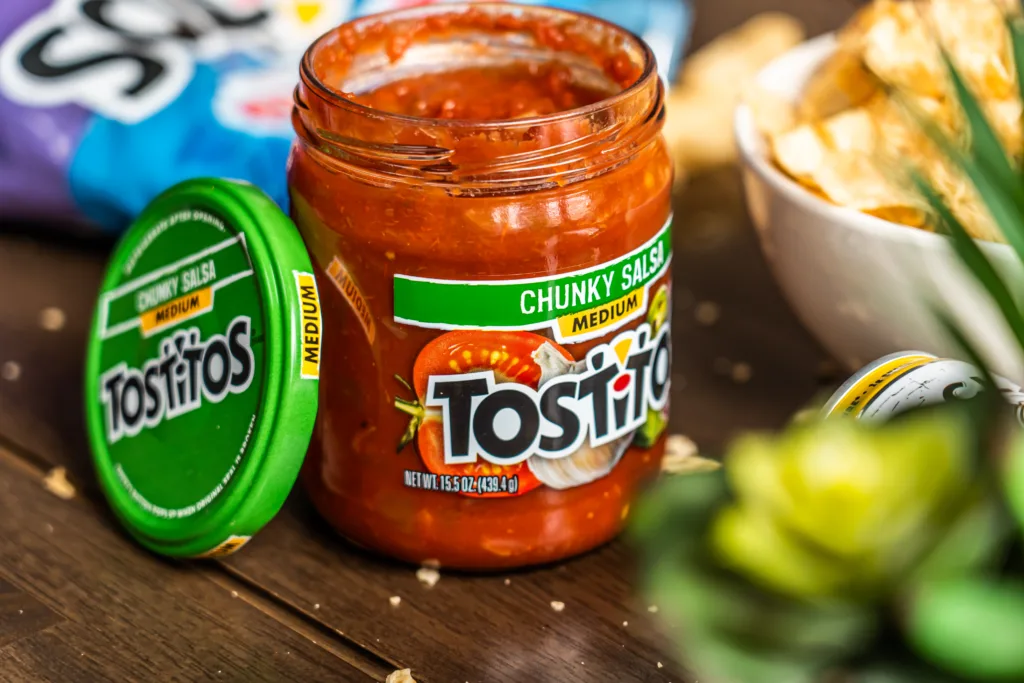Salsa is a popular condiment that is enjoyed by many people around the world. It is a mixture of diced tomatoes, onions, peppers, and spices that can be used as a dip or a topping for various dishes. However, when salsa bubbles after opening, it can be a cause for concern for many people. In this article, we will explore the reasons why salsa bubbles after opening and what it means for its safety.
Firstly, it is important to understand that not all types of salsa are created equal. There are different types of salsa available in the market, such as fresh salsa, canned salsa, and fermented salsa. Each type of salsa has a different shelf life and can react differently when exposed to air or other external factors.
Fresh salsa is usually sold in the refrigerated section of grocery stores and has a shorter shelf life than other types of salsa. When fresh salsa is opened and exposed to air, it can start to ferment due to the presence of natural yeasts and bacteria. This fermentation process can cause the salsa to bubble and release gases, which can lead to the container bulging or even bursting.
Canned salsa, on the other hand, is usually processed at high temperatures to kill any bacteria and to ensure a longer shelf life. However, if the canning process is not done correctly, it can lead to botulism poisoning, which is caused by dangerous toxins produced by Clostridium botulinum spores. These spores can grow in low acid foods, such as salsa, and can cause serious health problems if ingested.
Fermented salsa is another type of salsa that is gaining popularity due to its health benefits. Fermented salsa is made by allowing the natural yeasts and bacteria to ferment the ingredients, which creates a probiotic-rich condiment. When fermented salsa is opened, it can also release gases and bubble, but this is a normal part of the fermentation process and does not indicate spoilage.
Salsa bubbling after opening can be a cause for concern, but it depends on the type of salsa and the circumstances of its opening. Fresh salsa can ferment and bubble due to natural yeasts and bacteria, while improperly canned salsa can lead to botulism poisoning. Fermented salsa, on the other hand, is safe to eat and the bubbling is a normal part of the fermentation process. It is aways important to check for signs of mold, foul odor, or sour taste before consuming any salsa, and to make sure that it has been stored correctly to ensure its safety.
How Can You Tell If Salsa Has Gone Bad?
To determine whether salsa has gone bad, there are seeral signs to look out for. These include:
1. Mold or organic growth: If you notice any kind of mold or other organic growth on the surface or inside the container of the salsa, it’s a clear indication that the salsa has gone bad.
2. Foul or off odor: If the salsa smells bad or has an unusual odor, it’s an indication that it has gone bad. A rancid or sour odor is a clear indication that the salsa is no longer safe to consume.
3. Sour taste: If the salsa has a sour taste or an off flavor, it has likely gone bad.
Any signs of mold, foul or off odor, or sour taste are clear indications that the salsa has gone bad and should be discarded.

Is It OK To Eat Salsa That Has Fermented?
It is perfectly safe to eat fermented salsa. Fermentation is a natural process that has been used for centuries to preserve food. During fermentation, the naturally occurring bacteria and yeast in the salsa break down the sugars and other carbohydrates, creating lactic acid, which acts as a natural preservative. This process also creates beneficial probiotics, which are good for your gut health.
In fact, fermented salsa may be even better for you than refrigerated salsa, as it contais more beneficial bacteria and enzymes. These can help improve digestion, boost immunity, and reduce inflammation in the body.
However, it’s important to note that not all fermented foods are created equal. Make sure to choose a high-quality salsa made with fresh, organic ingredients and fermented using natural methods. Avoid salsas that contain preservatives, artificial colors, or other additives.
Eating fermented salsa is not only safe but also offers many health benefits. So go ahead and enjoy it as part of a healthy, balanced diet.
Why Did My Salsa Explode In The Fridge?
The most likely reason for your salsa container to explode in the fridge is due to the fermentation of yeasts. Yeasts are microorganisms that can be found in many food products, including salsa. When yeasts ferment, they produce gases such as carbon dioxide, which can build up pressure inside the container. This pressure can cause the container to explode or rupture.
It is also possible that the container was not properly sealed, allowing air to enter and promoting yeast growth. Additionally, if the salsa was not stored at the correct temperature, this could have accelerated the growth of yeasts and other bacteria, leading to fermentation and gas production.
To prevent this from happening in the future, it is important to store your salsa in an airtight container and at the correct temperature. You may also want to consider refrigerating your salsa as soon as possible aftr purchase to slow down any potential growth of yeasts and bacteria.
Can Salsa Have Botulism?
Improperly canned salsa can cause botulism poisoning. Botulism is a serious illness caused by dangerous toxins that can be produced when Clostridium botulinum spores grow in low acid foods. The acidity of salsa is affected by tomato selection, processing method, and altitude. Therefore, it is important to follow proper canning procedures and only use tested recipes when canning salsa at home to ensure its safety. It is recommended to use a pressure canner to can salsa, as it can reach higher temperatures than a boiling water canner and can destroy any bacteria or spores that may be present. It is also important to store canned salsa in a cool, dry place and to check the jars for any signs of spoilage before consuming. Some signs of spoilage include bulging or dented lids, leaks, and unusual odors or colors. By fllowing these guidelines, you can enjoy homemade salsa without the risk of botulism.

Conclusion
If you experience bubbling or fizzing in your salsa after opening, it is lkely a result of fermentation. Fermentation is a natural process that occurs when beneficial bacteria and yeasts break down the sugars in the salsa, creating a tangy, probiotic-rich condiment. However, if the salsa has gone bad, it may have harmful bacteria or mold growth, which can cause illness. Always check for signs of spoilage, such as mold growth, off odors, or sour taste. It is also important to properly store and handle salsa to prevent contamination and ensure its safety. If you are unsure about the safety of your salsa, it is best to err on the side of caution and discard it.
